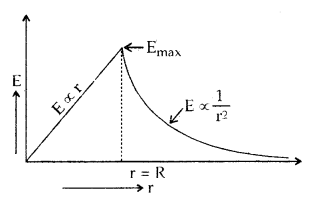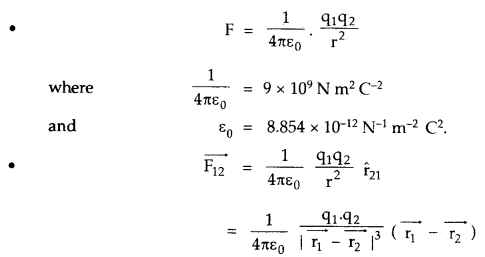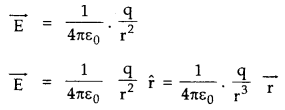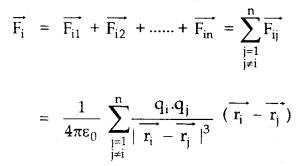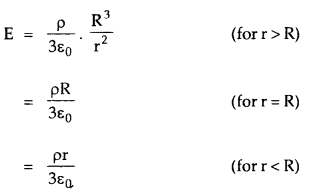Learn Biology Online – Definitions, Topics and Importance of Biology
Bio Botany – Chapters with Concepts
Asexual and Sexual Reproduction in Plants
- Asexual Reproduction
- Vegetative Reproduction
- Sexual Reproduction
- Pre-Fertilization Structure and Events
- Fertilization
- Post Fertilization Structure and Events
- Apomixis
- Polyembryony
- Parthenocarpy
Classical Genetics
- Heredity And Variation
- Mendelism
- Laws Of Mendelian Inheritance
- Monohybrid, Dihybrid, Cross, Backcross And Testcross
- Interaction Of Genes -Intragenic And Intergenic Incomplete Dominance, Lethal Genes, Epistasis
- Polygenic Inheritance In Wheat Kernel Colour, Pleiotropy – Pisum Sativum
- Extra Chromosomal Inheritance- Cytoplasmic Inheritance In Chloroplast
Chromosomal Basis of Inheritance
- Chromosomal Theory Of Inheritance
- Linkage – Eye Colour In Drosophila And Seed Colour In Maize
- Crossing Over, Recombination And Gene Mapping
- Multiple Alleles
- Mutation-Types, Mutagenic Agents And Their Significance
Principles and Processes of Biotechnology
- Development Of Biotechnology
- Methods Of Biotechnology
- Advancements In Modern Biotechnology
- Tools For Genetic Engineering
- Methods Of Gene Transfer
- Screening For Recombiants
- Transgenic Plants / Genetically Modified Crops
- Applications Of Biotechnology
Plant Tissue Culture
- Basic Concepts In Plant Disuse Culture
- Plant Tissue Culture Techniques and Types
- Plant Regeneration Pathway
- Applications of Plant Tissue Culture
- Conservation of Plant Genetic Resources
- Intellectual Rights of Property (Ipr), Biosafety and Bioethics
- Future Biotechnology
Principles of Ecology
Ecosystem
Environmental Issues
- Green House Effect, Ozone Depletion
- Forestry
- Deforestation
- Afforestation
- Alien Invasive Species
- Conservation
- Carbon Capture And Storage (CCS)
Plant Breeding
- Relationship Between Human and Plants
- Domestication Of Plants
- Origin Of Agriculture
- History Of Agriculture
- Organic Agriculture
- Plant Breeding
- Conventional Plant Breeding Methods
- Modern Plant Breeding Techniques
Economically Useful Plants and Entrepreneurial Botany
- Food Plants
- Spices And Condiments
- Fibre
- Timber
- Latex
- Pulp Wood
- Dye
- Cosmetics
- Traditional System Of Medicines
- Medicinal Plants
- Entrepreneurial Botany
Diversity of Living World
Plant Kingdom
- Classification of Plants
- Life Cycle Patterns in Plants
- Algae
- Bryophytes
- Pteridophytes
- Gymnosperms
- Angiosperms
Vegatative Morphology
Reproductive Morphology
- Inflorescene
- Flower
- Accessory Organs
- Androecium
- Gynoecium
- Construction of Floral Diagram and Floral Formula
- Fruits
- Seed
Taxonomy and Systematic Botany
- Taxonomy and Systematics
- Taxonomic Hierarchy
- Concept of species – Morphological, Biological and Phylogenetic
- International Code of Botanical Nomenclature (ICBN)
- Taxonomic Aids
- Botanical Gardens
- Herbarium – Preparation and Uses
- Classification of Plants
- Need for Classification
- Types of Classification
- Modern Trends in Taxonomy
- Cladistics
- Selected Families of Angiosperms
Cell: The Unit of Life
- Discovery
- Microscopy
- Cell Theory
- Types of Cells
- Plant and Animal Cell
- Cell Organelles
- Nucleus
- Flagella
Cell Biology and Biomolecules
Cell Biology and Biomolecules
- Water
- Primary and Secondary Metabolites
- Carbohydrates and its Types
- Lipids
- Proteins
- Enzymes
- Nucleic Acids
Tissue and Tissue System
- Meristematic Tissue
- Permanent Tissues
- The Tissue System
- Epidermal Tissue System
- Fundamental Tissue System
- Vascular Tissue System
- Comparision of Primary Structure – Dicot and Monocot Root – Stem and Leaf
Secondary Growth
Transport in Plants
- Types of Transport
- Cell to Cell Transport
- Plant Water Relations
- Absorption of Water
- Ascent of Sap
- Transpiration
- Translocation of Organic Solutes
- Mineral Absorption
Mineral Nutrition
- Classification of Minerals
- Functions – Mode of Absorption and Deficiency Symptoms of Macronutrients
- Functions – Mode of Absorption and Deficiency Symptoms of Micronutrients
- Deficiency Diseases and Symptoms
- Critical Concentration and Toxicity of Minerals
- Hydroponics and Aeroponics
- Nitrogen Fixation
- Nitrogen Cycle and Nitrogen Metabolism
- Special Modes of Nutrition
Photosynthesis
- Definition, Significance and Site of Photosynthesis
- Photosynthetic Pigments
- Spectrum of Electromagnetic Radiation
- Photosynthetic Unit (Quantasome)
- Absorption Spectrum and Action Spectrum
- Emerson’s Experiments and Hill’s Reaction
- Modern Concept of Photosynthesis
- Photo – Oxidation Phase of Light Reaction
- Photo Chemical Phase of Light Reaction
- Photophosphorylation
- Dark Reaction or Cycle or Biosynthetic Phase or Photosynthetic Carbon Reduction (PCR) Cycle
- Hatch & Slack Pathway or Cycle or Dicarboxylic Acid Pathway or Dicarboxylation Pathway
- Crassulacean Acid Metabolism or CAM Cycle
- Photorespiration or Cycle or Photosynthetic Carbon Oxidation (PCO) Cycle
- Factors Affecting Photosynthesis
- Photosynthesis in Bacteria
Respiration
- Gaseous Exchange
- Structure of ATP
- Redox Reactions
- Types of Respiration
- Stages of Respiration
- Respiratory Quotient
- Anaerobic Respiration
- Factors Affecting Respiration
- Pentose Phosphate Pathway
Plant Growth and Development
- Characteristics of Growth
- Plant Growth Regulators
- Photoperiodism
- Vernalization
- Seed Germination and Dormancy
- Senescene
Bio Zoology – Chapters with Concepts
Reproduction in Organisms
Human Reproduction
- Human Reproductive System
- Gametogenesis
- Menstrual Cycle
- Fertilization And Implantation
- Maintenance Of Pregnancy And Embryonic Development
- Parturition And Lactation
Reproductive Health
- Need For Reproductive Health Problems And Strategies
- Amniocentesis And Its Statutory Ban
- Social Impact Of Sex Ratio, Female Foeticide And Infanticide
- Population Explosion And Birth Control
- Medical Termination Of Pregnancy (MTP)
- Sexually Transmitted Diseases (Std)
- Infertility
- Assisted Reproductive Technology (Art)
- Detection Of Foetal Disorders During Early Pregnancy
Principles of Inheritance and Variation
- Multiple Alleles
- Human Blood Groups
- Genetic Control Of Rh Factor
- Sex Determination
- Sex Linked Inheritance
- Karyotyping
- Pedigree Analysis
- Mendelian Disorders
- Chromosomal Abnormalities
Molecular Genetics
- Gene As The Functional Unit Of Inheritance
- In Search Of The Genetic Material
- DNA Is The Genetic Material
- Chemistry Of Nucleic Acids
- Rna World
- Properties Of Genetic Material
- Packaging Of DNA Helix
- DNA Replication
- Transcription
- Genetic Code
- Rna – The Adapter Molecule
- Translation
- Regulation Of Gene Expression
- Human Genome Project (HGP)
- DNA Finger Printing Technique
Evolution
- Origin Of Life – Evolution Of Life Forms
- Geological Time Scale
- Biological Evolution
- Evidences For Biological Evolution
- Theories Of Biological Evolution
- Mechanism Of Evolution
- Hardy Weinberg Principle
- Origin And Evolution Of Man
Human Health and Diseases
- Common Diseases In Human Beings
- Maintenance Of Personal And Public Hygiene
- Basic Concepts Of Immunology
- Immunodeficiency Diseases
- Autoimmune Diseases
- Adolescence – Drug And Alcohol Abuse
- Mental Health – Depression
Microbes in Human Welfare
- Microbes In Household Products
- Microbes In Industrial Products
- Microbes In Sewage Treatment And Energy Generation
- Microbes In The Production Of Biogas
- Bioremediation
Applications of Biotechnology
- Applications In Medicine
- Gene Therapy
- Stem Cell Therapy
- Molecular Diagnostics
- Transgenic Animals
- Biological Products And Their Uses
- Animal Cloning
- Ethical Issues
Organisms and Population
- Organism and Its Environment
- Habitat
- Major Abiotic Components Or Factors
- Concept Of Biome And Their Distribution
- Responses To Abiotic Factors
- Adaptations
- Populations
- Population Attributes
- Population Age Distribution
- Growth Models / Curves
- Population Regulation
- Population Interaction
Biodiversity and its Conservation
- Biodiversity
- Importance Of Biodiversity – Global And India
- Biogeographical Regions Of India
- Threats To Biodiversity
- Causes Of Biodiversity Loss
- IUCN
- Biodiversity And Its Conservation
Environmental Issues
- Pollution
- Air Pollution
- Water Pollution
- Noise Pollution
- Agrochemicals
- Biomagnification
- Eutrophication
- Organic Farming And Its Implementation
- Solid Waste Management
- Ecosan Toilets
The Living World
- Diversity in the Living World
- Need for Classification
- Taxonomy and Systematics
- Three Domains of Life
- Taxonomic Hierarchy
- Nomenclature
- Concept of Species
- Tools for Study of Taxonomy
Kingdom Animalia
Tissue Level of Organisation
Organ and Organ Systems in Animals
Digestion and Absorption
- Digestive System
- Digestion of Food and Role of Digestive Enzymes
- Absorption and assimilation of Proteins, carbohydrates and fats
- Caloric Value of Carbohydrates, Proteins and Fats
- Nutritional and Digestive Disorders
Respiration
- Respiratory Function
- Respiratory Organs in Various Organisms
- Mechanism of Breathing
- Exchange of Gases
- Transport of Gases
- Problems in Oxygen Transport
- Disorders of the Respiratory System
- Effects of Smoking
Body Fluids and Circulation
- Body Fluids
- Blood Vessels – Arteries, Veins and Capillaries
- Circulatory Pathways
- Human Circulatory System
- Double Circulation
- Regulation of Cardiac Activity
- Disorders of the Circulatory System
- Cardio Pulmonary Resuscitation (CPR)
Excretion
- Models of Excretion
- Human Excretory System
- Mechanism of Urine Formation in Human
- Regulation of Kidney Function
- Micturition
- Role of Other Organs in Excretion
- Disorders Related to the Excretory System
- Haemodialysis
Locomotion and Movement
- Types of Movement
- Types of Muscles
- Skeletal Muscle (Voluntary Muscle)
- Structure of Contractile Proteins
- Mechanism of Muscle Contraction
- Types of Skeletal Muscle Contraction
- The Axial Skeleton
- The Appendicular Skeleton
- Types of Joints
- Disorders of Muscular and Skeletal System
- Benefits of Regular Exercise
Neural Control And Coordination
- Neural System
- Human Neural System
- Neuron as a Structural and Functional Unit of Neural System
- Central Neural System (CNS)
- Reflex Action and Reflex Arc
- Sensory Reception and Processing
Chemical Coordination and Integration
- Endocrine Glands and Hormones
- Human Endocrine System
- Hypo and Hyper Activity of Endocrine Glands and Related Disorders
- Mechanism of Hormone Action
Trends in Economic Zoology

